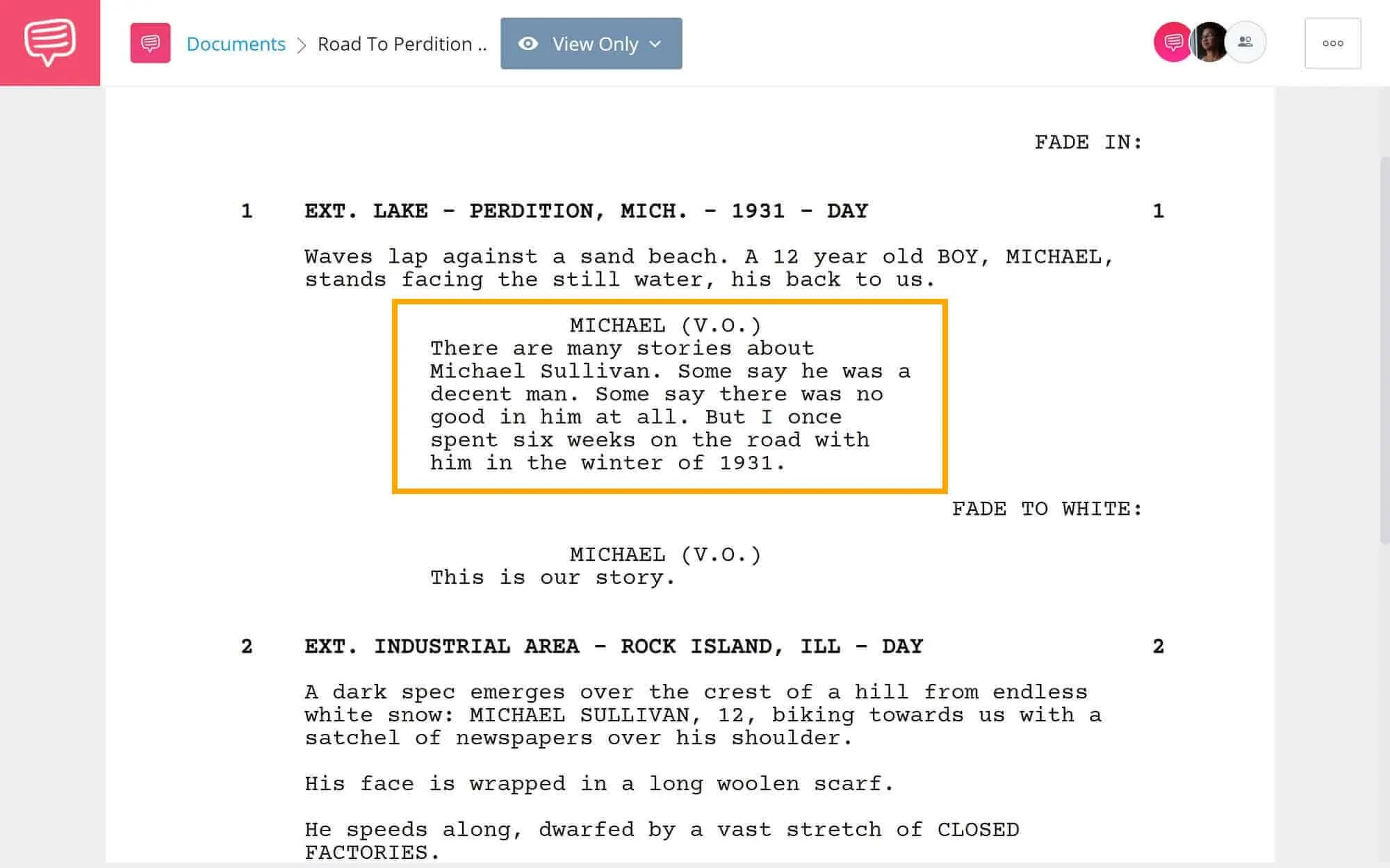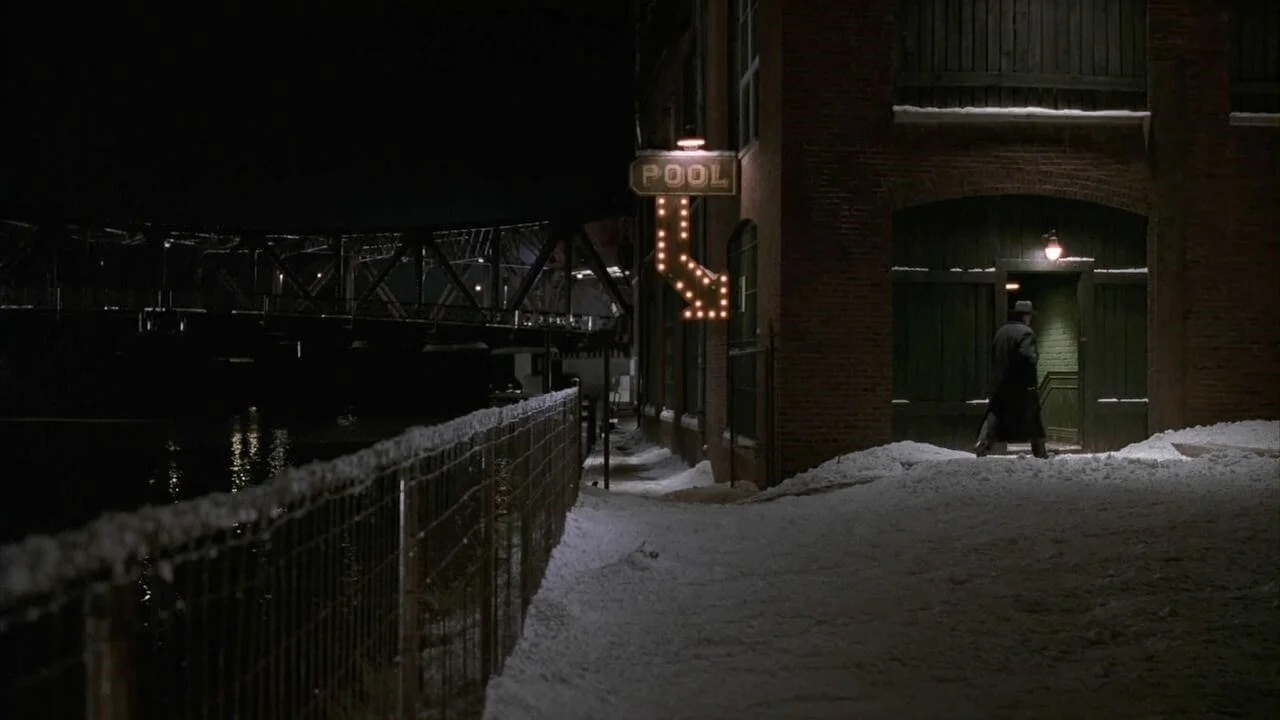It’s been nearly two decades since the release of Sam Mendes’ gangster-epic Road to Perdition and we thought it would be a good idea to look back at what made it so great. Mendes may be more famous for working on films like American Beauty, Skyfall, and 1917, but his work as the director of Road to Perdition is certainly some of his best. We’re going to break down the best and worst aspects of the film from writing to cinematography, but first, let’s remind ourselves of the story.
road to perdition Movie REVISITED
Road to Perdition Best & Worst
We’re going to break down the best and worst aspects of Road to Perdition from writing to cinematography, but first, let’s remind ourselves of the story.
ROAD TO PERDITION SYNOPSIS
Road to Perdition plot
Road to Perdition follows the story of Michael Sullivan (Tom Hanks) and his son Michael Jr. (Tyler Hoechlin) as they go on the road to escape the threat of a dangerous assassin named Maguire (Jude Law). The film takes place in 1931 and revolves around Prohibition-era crime.
Road to Perdition Movie Cast Members:
- Paul Newman
- Daniel Craig
- Stanley Tucci
- Jennifer Jason Leigh
The cast of Road to Perdition is simply incredible, and the locales in which the film was shot are breathtaking. You may be thinking, “where was Road to Perdition filmed?” Good question!
There were a lot of Road to Perdition filming locations, mostly in and around the Chicago area. But perhaps the most iconic shooting location was the Charles Dawes house in Evanston, Illinois. The image below, taken by Eric Allix Rogers, should seem familiar if you’ve seen the film.
Road to Perdition Filming Locations • Dawes House
Now that we’ve reviewed some background details for the Road to Perdition movie, let’s jump into the analysis. Spoilers beware:
A Different Kind of Road Trip
Road to Perdition story and plot
If there’s one knock to be made against Road to Perdition, it’s that its story isn’t the best. Although the film is widely considered one of the best gangster movies of all-time, critics mostly agree that the story is far too reliant on tropes and cliches.
We imported the Road to Perdition screenplay into StudioBinder’s screenwriting software to take a closer look. My main gripe with the story of Road to Perdition is that it’s tone is just… off. Let’s take a look at the script’s opening scene. Make sure to read Michael’s (V.O.) closely.
Road to Perdition Movie Script • Read ‘The Opening Scene’
Think back to the first time you read or watched Road to Perdition. Who did you think Michael was talking about here?
Personally, I don’t think this sounds like something that somebody would say about their father. One of the major themes of Road to Perdition is reconciling relationships between fathers and sons. In the beginning, Michael and his father are distant from one another. By the end, they grow much closer.
But this (V.O.) takes place at the end, so why does Michael still sound so distant? One could argue that the intention was to maintain distance between the two characters. That point makes sense thematically, but it isn’t very satisfying. Overall, the film struggles to find an emotional arc that connects tone from beginning to end.
Cast of Road to Perdition
The stellar Road to Perdition cast
If there's one thing that becomes immediately obvious is the Road to Perdition cast. Mendes was able to wrangle some top-tier actors and actresses for his ode to the classic gangster movie. In fact, in many cases, these actors are playing against type, making them that much more fascinating characters.

Tom Hanks Road to Perdition
Tom Hanks plays the lead, Michael Sullivan, a trusted fix-it man for the organization. One doesn't think of Hanks as Tommy Gun-wielding gangster but he really pulls it off.
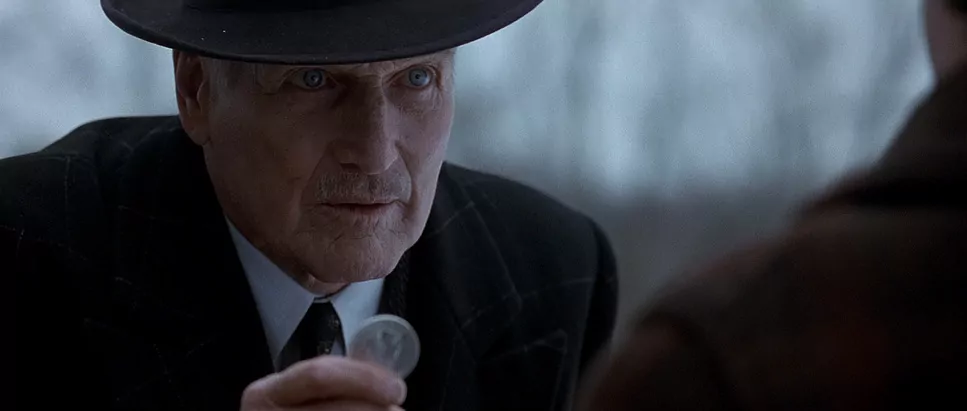
Paul Newman Road to Perdition
Paul Newman, in his last feature film role, brings an insane amount of gravitas and menace to crime boss John Rooney. It's one of Newman's most understated performances but powerful nonetheless.
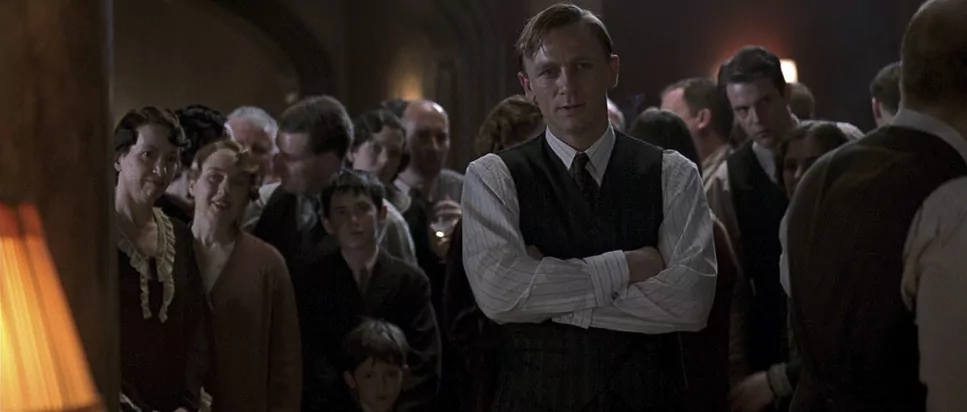
Daniel Craig Road to Perdition
Before he was James Bond, Daniel Craig plays Connor Rooney, a vengeful and resentful heir to Rooney's kingdom. Craig doesn't often get many roles that allow him to play such bitter vulnerability and that's a shame because he really brings his A-game to the Road to Perdition cast.
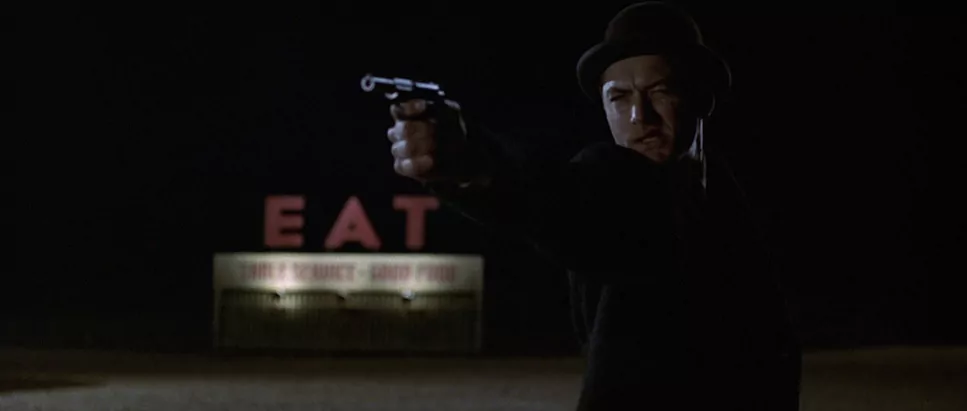
Jude Law Road to Perdition
As the exceptionally skilled and twisted hitman, Maguire, Jude Law delivers a chilling performance. Like Daniel Craig, Law's performance just proves that when you give actors good material, even when it's outside their typical range, they can really stretch their acting muscles.
Recreating an Era
Road to Perdition production design
One of the best aspects of the film is its production design. Everything from wardrobing to lighting to props is masterclass. It may seem easy to nail period-piece detail, but it’s actually incredibly difficult. To pull it off, you need a production designer at the top of their game.
Let’s take a look at the ‘speakeasy scene’ to see Road to Perdition’s production design in motion. Pay close attention to the three tenets we alluded to earlier: wardrobing, lighting, and props.
Road to Perdition movie ‘Speakeasy Scene'
It’s hard not to marvel at all the working components of the Road to Perdition ‘speakeasy scene.’ Why is it so good? Well, it all revolves around the production design. We see a faux-sign on the door outside with an enforcer standing guard. If that isn’t enough to suggest that the establishment is a speakeasy, then the ‘flappers’ inside certainly are.
How about the music? The energetic, quick-tempo jazz communicates setting in an immersive way — it’s certainly a great example of how to use diegetic sound. The lighting is brilliant as well. Notice how Sullivan begins in the shadows, but once he learns the truth, he’s bathed in the light? Watch the scene again, then tell us what you picked up in the comments below!
Did You Know?
Many have suggested that Sullivan’s journey through the speakeasy mirrors Dante’s journey through the seven circles of Hell. This is communicated through color and lighting.
Masterclass Visual Composition
Road to Perdition cinematography
There’s no doubt about it, the cinematography in Road to Perdition is some of the best of the 21st century. Cinematographer Conrad L. Hall was awarded a posthumous Academy Award for his work on the film.
When a film is vibrant, colorful, and visually epic, then we usually heap loads of praise onto the cinematographer or DP. But shot composition and framing are far less venerated by critics.
We’re going to break down a few shots from the film to show you why Conrad L. Hall and Mendes deserve veneration for their wonderful work.
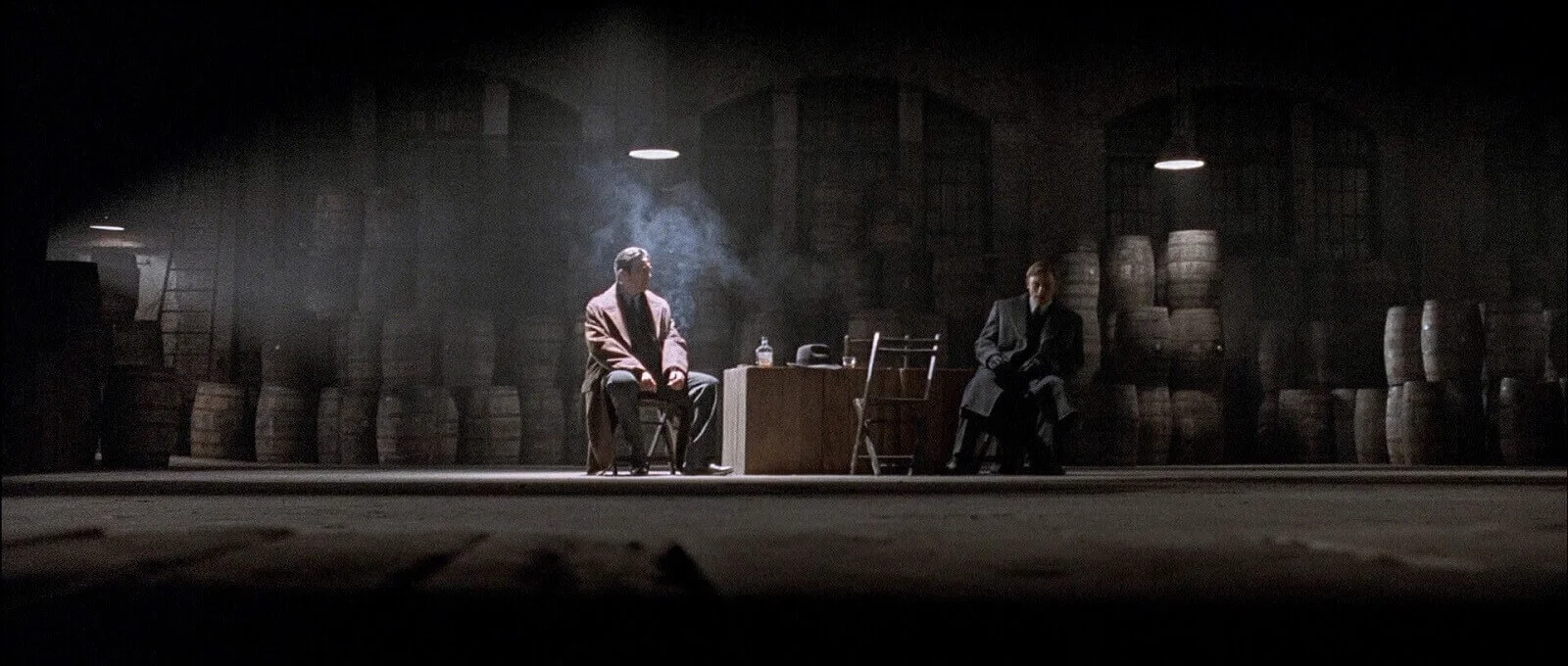
Road to Perdition Awards • Cinematography
Here, the camera is placed just above the ground to give us Michael’s POV. Not only is this a beautiful shot, but it also makes sense cinematically.
Tom Hanks Road to Perdition Wide Shot
This wide-shot is expertly composed and makes great use of the ‘directional pool-sign’ prop hanging from the building.
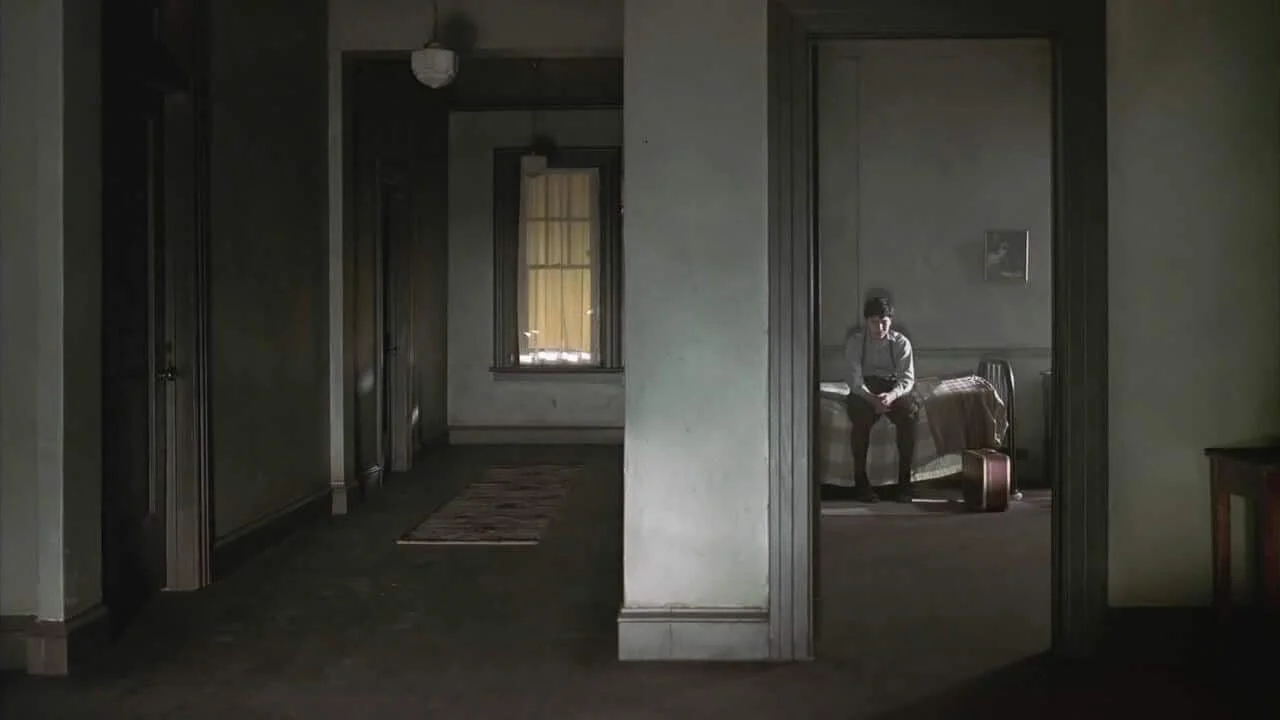
Road to Perdition Cast • Tyler Hoechlin
This image is beautifully framed with vertical lines and muted colors. Notice how the rug and window line up on a tilted axis? It’s subtle, but visually satisfying.
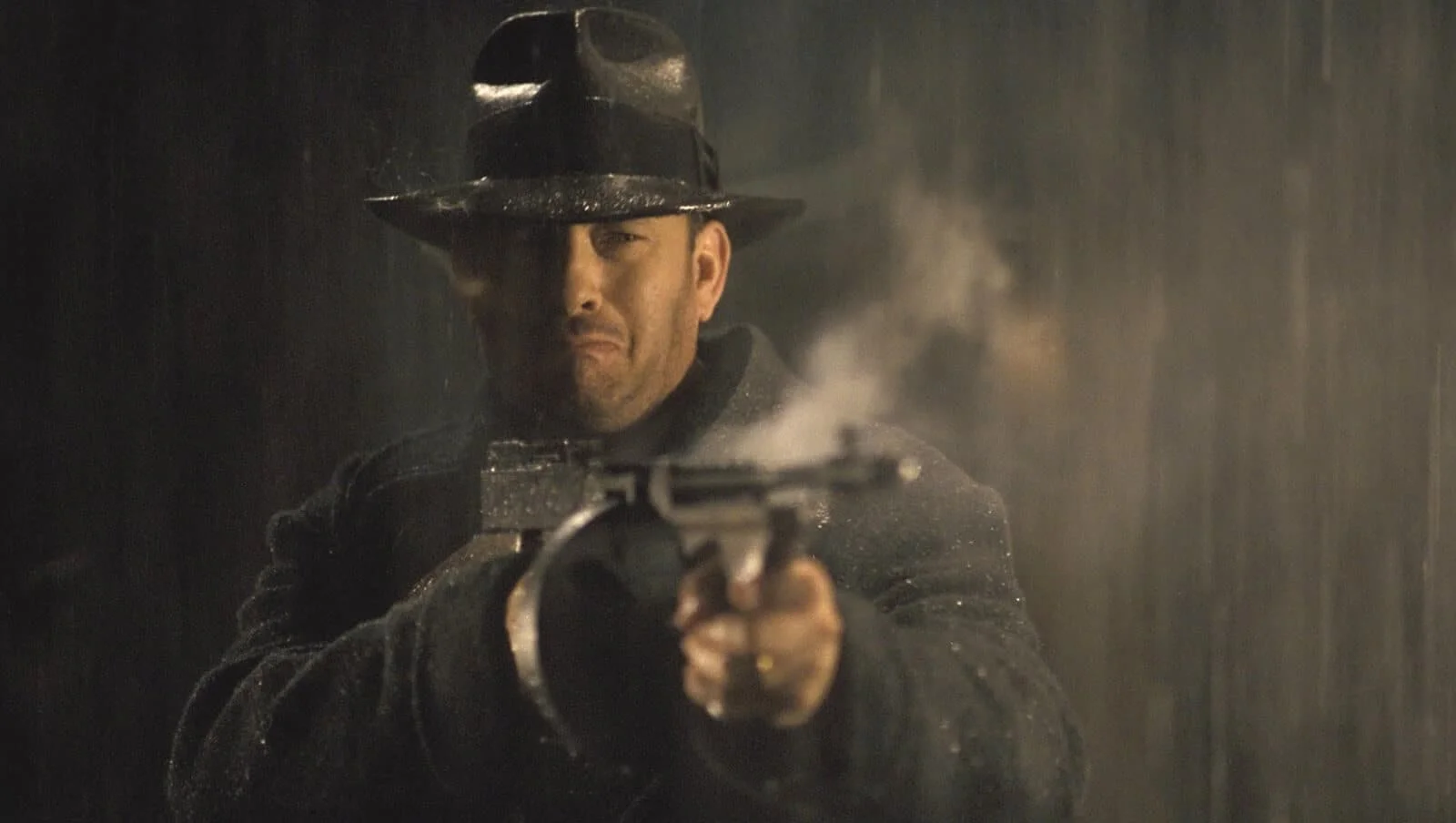
Tom Hanks • Road to Perdition movie
Here, we’re shown a great example of how to use the medium close-up shot. In this scene, we hear only non-diegetic music as Sullivan goes on a rampage. But once he gets to John (Paul Newman), the music fades and the light of gunfire dominates the screen.
Accolades for Road to Perdition
All the Road to Perdition awards
When it came around to awards season, the film was certainly recognized but perhaps not as much as it should have been. The Road to Perditions awards included:
- 6 Oscar nominations
- 3 BAFTA nominations
- 1 Golden Globe nomination
- Outstanding Achievement in Cinematography from the ASC
Paul Newman was nominated for Best Supporting Actor and his role as John Rooney is a fitting cap to an already stellar career. Thomas Newman's nominated score is truly memorable as is Dennis Gassner and Nancy Haigh's art direction.
But it is Conrad L. Hall's posthumous win for Best Cinematography is the real victory here. From stunning work on In Cold Blood, Butch Cassidy and the Sundance Kid to his previous collab with Mendes on American Beauty, Hall was a true visionary. He died six months after Road to Perdition was released.
Road to Perdition Meaning
What can we learn from this film?
What is the meaning of Road to Perdition? Well, as the saying goes, “the road to Hell is paved with good intentions.” We can learn a lot from Sam Mendes’ gangster-classic. The screenplay isn’t the sharpest, but the production design and cinematography absolutely are.
Remember, critiquing the strengths and weaknesses of a film can help you hone your skills as a filmmaker. Let’s hear what Sam Mendes learned from working on the film.
Sam Mendes on Road to Perdition
Nearly every frame of the film demands analysis — and that’s a good thing! Anybody who’s interested in cinematography should study the film and anybody interested in screenwriting should read the script.
UP NEXT
Roger Deakins Cinematography Guide
Road to Perdition is an absolute visual treat. Directors and cinematographers can learn a lot from studying its many layered frames. Looking for more examples of expertly composed cinematography? Check out our guide to Roger Deakins’ cinematography style, with tips and tricks on how you can get started!
Up Next: Deakins Tips and Tricks →
Share your vision with elegant shot lists and storyboards.
Create robust and customizable shot lists. Upload images to make storyboards and slideshows.

